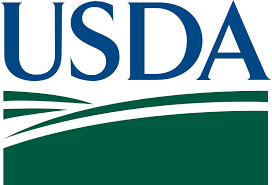In honor of National Homeownership Month, U.S. Department of Agriculture (USDA) Secretary Tom Vilsack announced the celebration of 75 years of USDA’s efforts in helping millions of people purchase, repair, and build affordable homes in rural and Tribal communities.
“For decades, USDA has served as a safety net for hardworking Americans who dream of owning a home but face challenges to doing so,” Secretary Vilsack said. “Now more than ever, people across the nation need access to safe, decent, and affordable housing, especially in rural and Tribal communities. The Biden-Harris Administration remains committed to ensuring all Americans have affordable places to live. Therefore, USDA is redoubling its efforts to equip potential homebuyers with resources and information they need to be ready to take full advantage of our critical programs as funding is available.”
Throughout this month, USDA is highlighting the significant impact of its Rural Development homeownership programs. These programs have historically enabled people in rural America and on Tribal lands to build wealth, equity, and a foundation for a brighter future for themselves and their families:
- Since 1949, USDA’s Single Family Housing Programs have helped nearly 5 million families and individuals achieve the dream of homeownership.
- USDA’s Single Family Direct Home Loans have assisted approximately 2.2 million families and individuals in purchasing a home.
- The Single Family Home Repair Loan and Grant Program has improved the quality of homes for nearly 455,000 individuals and families since 1950.
- The Mutual Self-Help Housing Technical Assistance Grant Program has enabled more than 56,000 families to build their own homes since 1966.
Under the Biden-Harris Administration, over $43 billion has been invested to aid nearly 266,000 families and individuals in rural and Tribal communities to buy, repair, and build homes through Rural Development’s Single-Family Housing programs.
USDA is also focusing on resources to prepare potential homebuyers for purchasing a home and applying for USDA programs once funding becomes available. Individuals can utilize the Consumer Financial Protection Bureau’s Home Loan Toolkit and review program eligibility through USDA’s Single Family Housing Self-Assessment site.
USDA Homeownership Programs
For 75 years, USDA has provided affordable financing options for families unable to secure traditional home loans. These options include low-interest rates, loan guarantees, reduced down payments, and construction grants, making Rural Development’s Single Family Housing Programs essential for millions of rural Americans.
Key programs include:
- The Single Family Housing Direct Home Loan Program, offering no-money-down loans to qualified lower-income applicants to help them build wealth and equity.
- The Single Family Home Repair Loan and Grant Program, assisting families and individuals in repairing and modernizing their homes to make them safer and healthier.
- The Mutual Self-Help Housing Grant Program, partnering with nearly 250 organizations to lower home purchasing costs by involving families in the construction process.
- The Single Family Housing Guaranteed Loan Program, which partners with private lending institutions to back loans for families and individuals buying homes in rural areas.
USDA Rural Development’s loans and grants expand economic opportunities, create jobs, and improve the quality of life in rural areas. This support includes infrastructure improvements, business development, housing, community facilities, and high-speed internet access in rural, Tribal, and high-poverty areas. For more information, visit the Rural Data Gateway and USDA’s official website.
Under the Biden-Harris Administration, USDA is transforming America’s food system, focusing on resilient local and regional food production, fairer markets, access to nutritious food, new markets for climate-smart practices, and historic investments in infrastructure and clean energy in rural America. USDA is also committed to equity, removing systemic barriers, and building a representative workforce. To learn more, visit www.usda.gov.

















